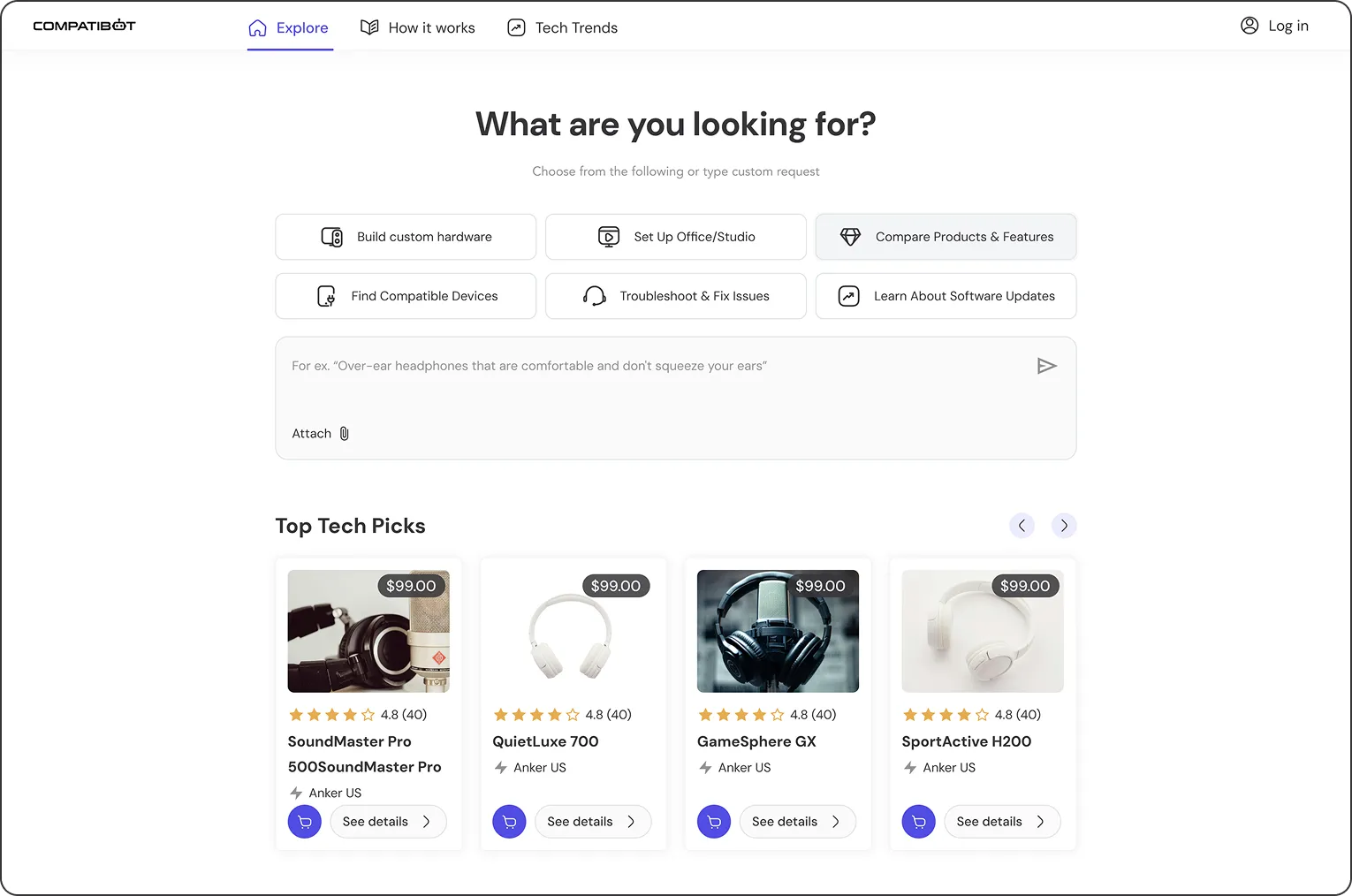Clients, who owned a tech and electronics retail store, approached me with an idea for an AI-based product. Their goal was to create a chatbot that assists users in checking device compatibility to streamline the process of selecting tech products and enhance the customer experience.
Context & Challenges
This was my first experience designing a fully AI-driven product, which presented a unique set of challenges.
The core difficulty lay in transitioning from the inherent unpredictability of AI - where it can theoretically "do anything" - to a structured, need-based flow that addresses specific user problems. If two users started with the same query, their interactions could diverge significantly, making it critical to design an interface that guides users toward their goals while maintaining a sense of control.
My challenge was to create a dynamic system that not only accommodates this variability but also ensures users feel confident navigating the AI’s capabilities through intuitive and transparent design.
Design Process
Due to limited resources, I focused on analyzing the clients’ experience and conducting independent research, progressing to design and holding regular alignment sessions with clients to ensure the project stayed on track.

Stakeholder Interviews:
I conducted an initial kick-off meeting to understand the clients’ request and align on their vision.
Artefacts & competitor’s research
I studied marketing materials provided by the clients, which detailed their user personas and performed competitors research to analyse existing solutions in the market.
Ideation & Strategy
We held multiple communication sessions with the clients, during which we iterated on three versions of wireframes for the main layout and defined key user scenarios:
- Finding & comparing devices
- Building a custom PC or set up a studio
- Getting troubleshooting instructions
- Ability to make one-click purchase
To address the unpredictability of AI, I tried to focus on two main pillars: guide user (to explain contextually how the product works), give user a feeling of control (showing request history, having dynamic contextual action buttons) to clearly show what was happening at each step of the interaction.
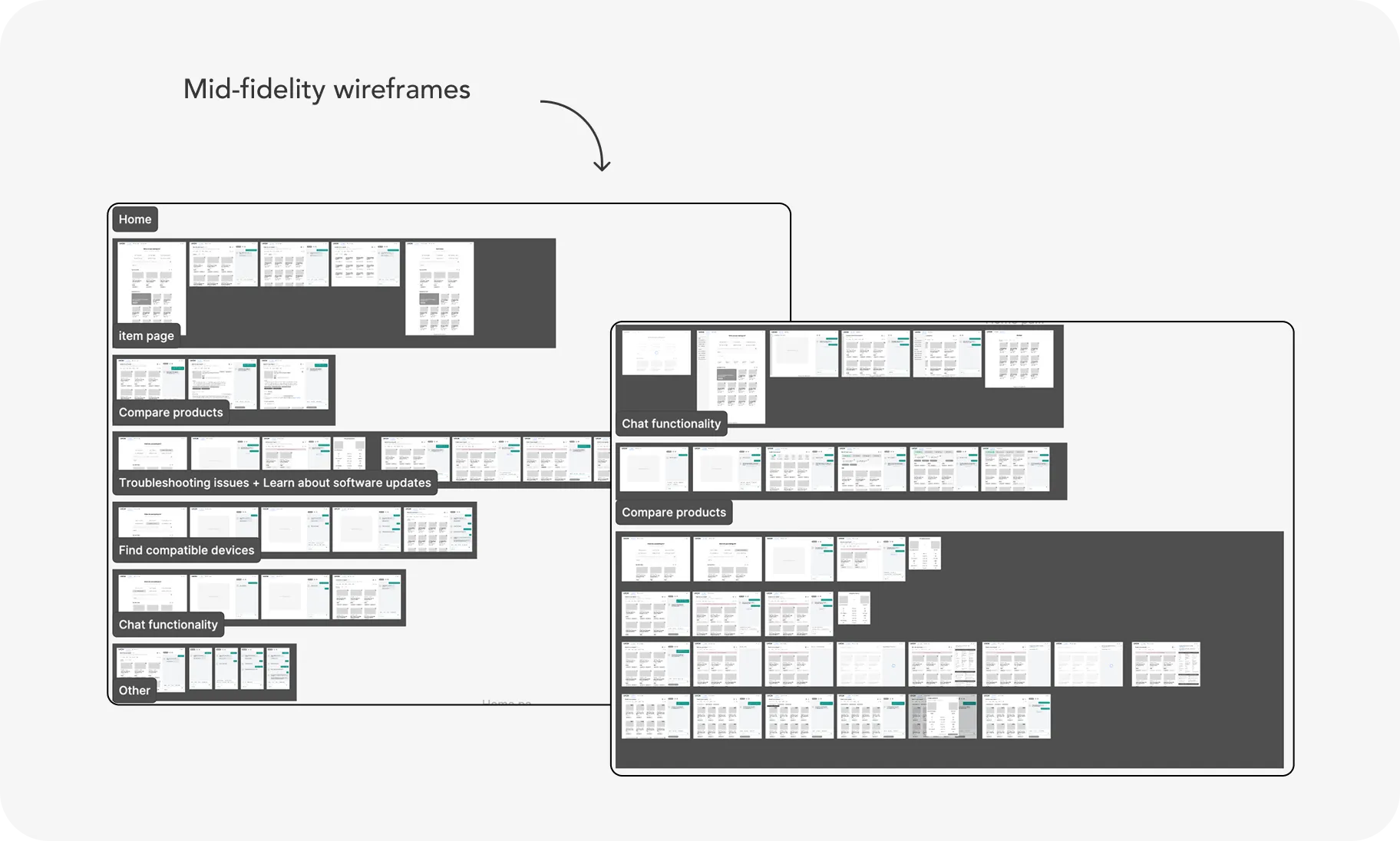
UI Design
After this, I developed several visual style concepts to define the product’s aesthetic.
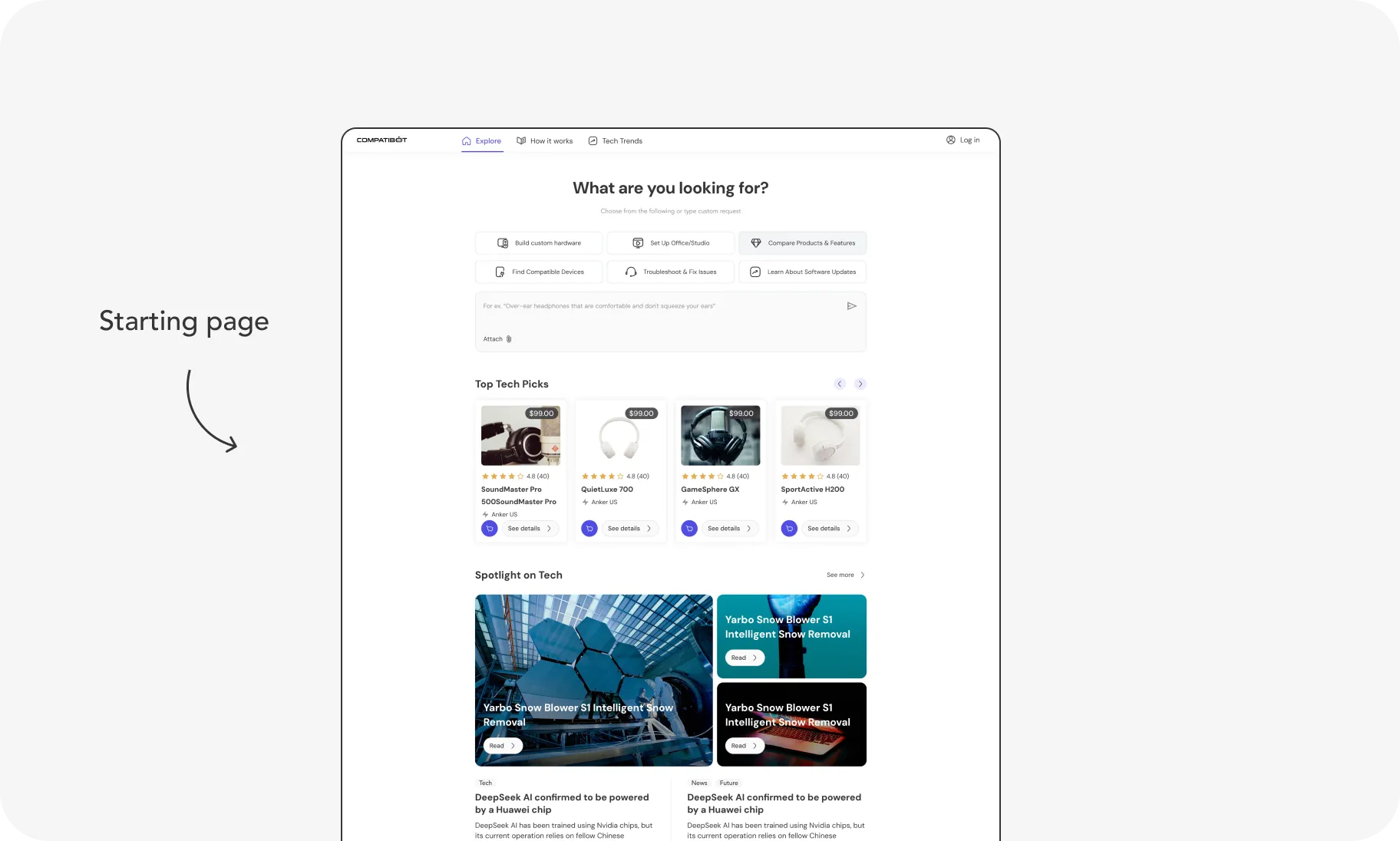
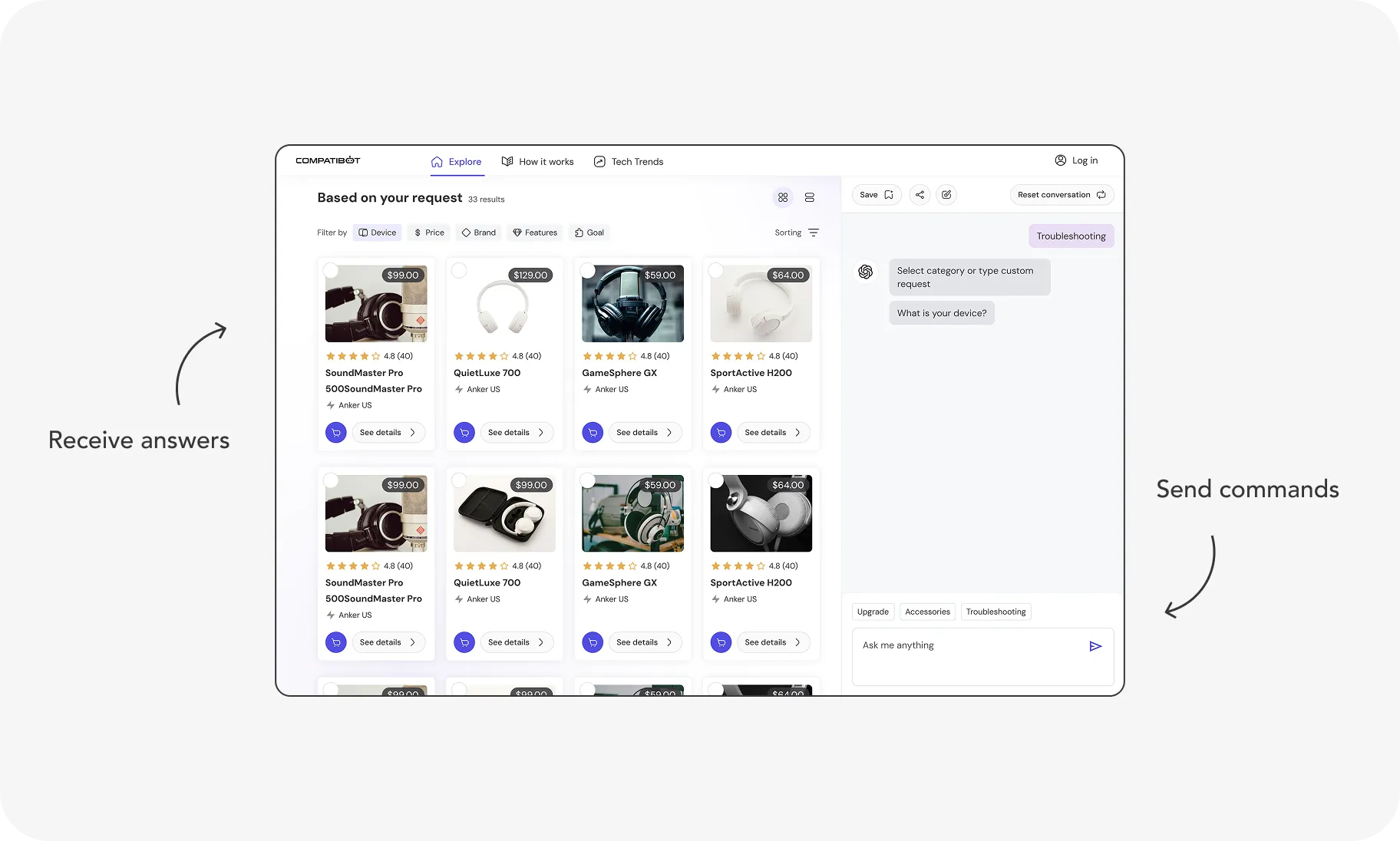
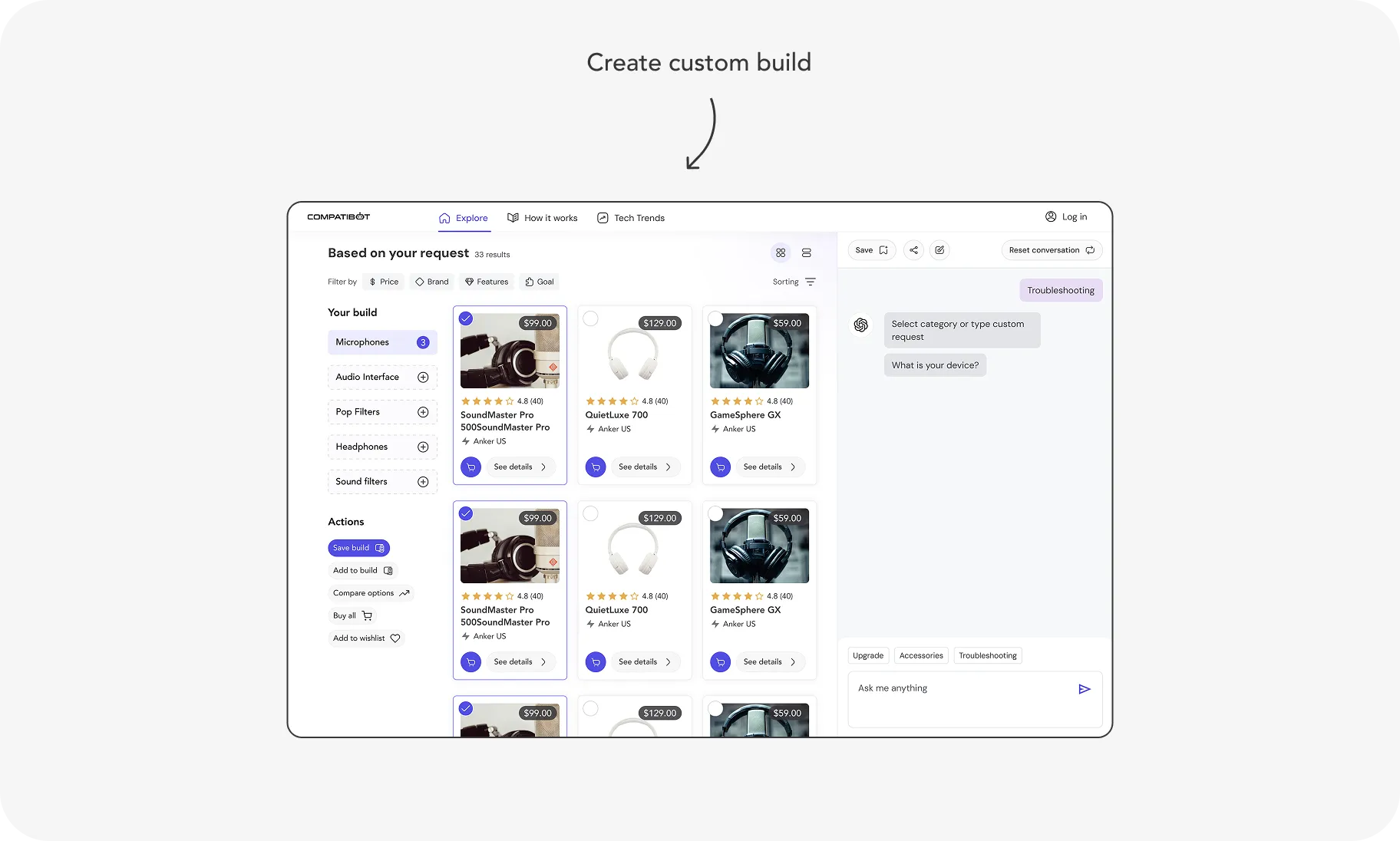
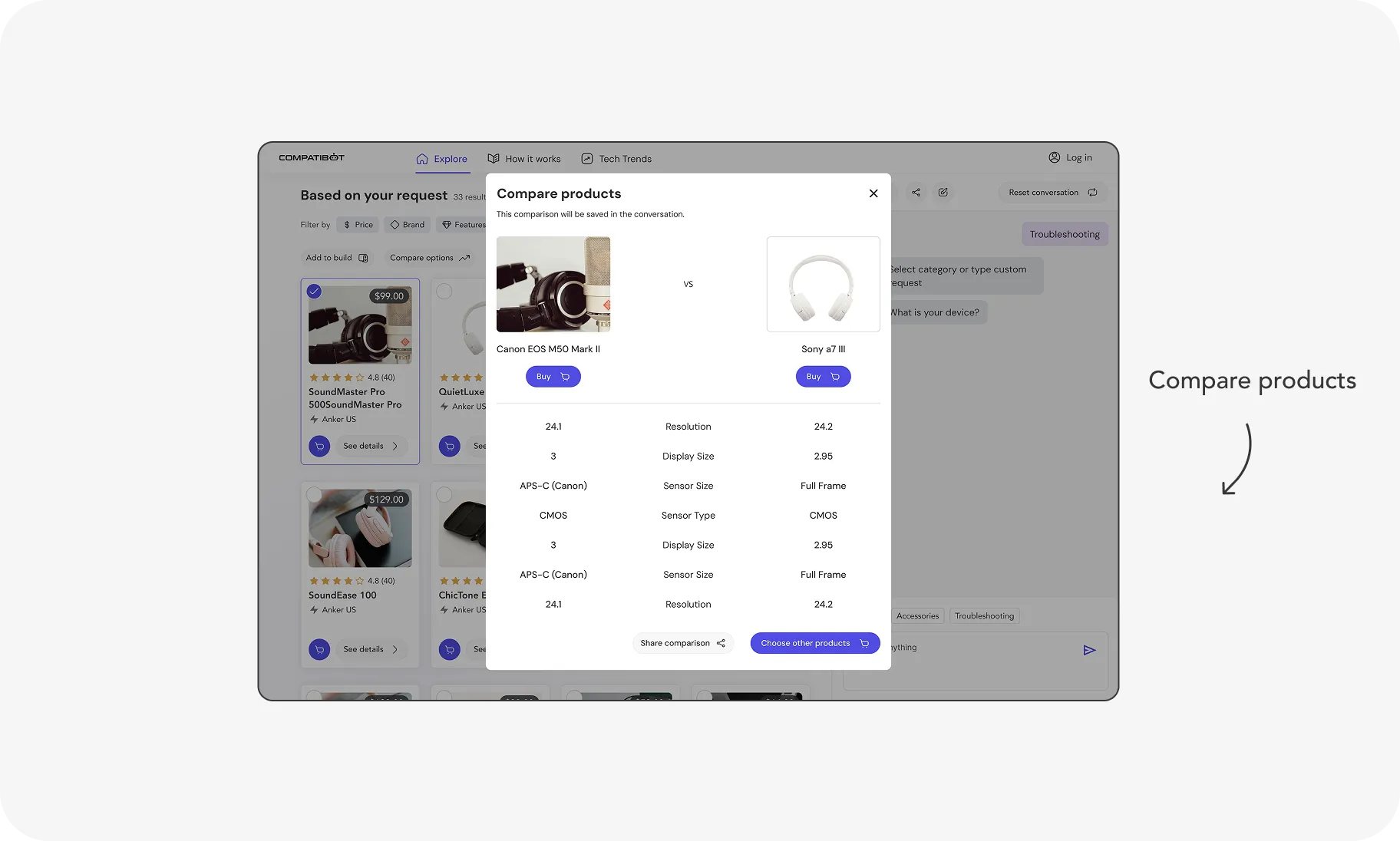
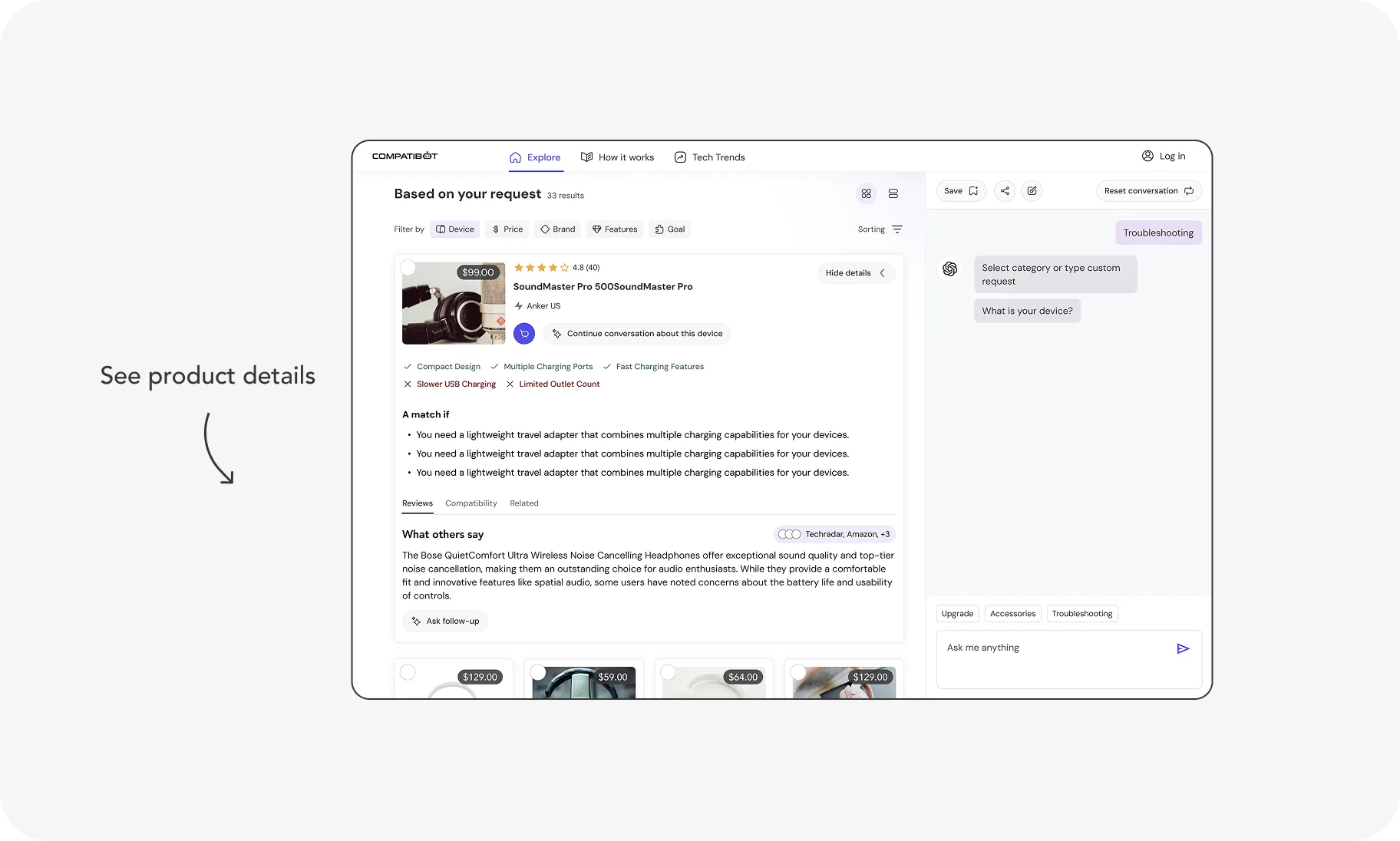
UI Kit
Built a UI Kit to ensure design consistency and facilitate further development.
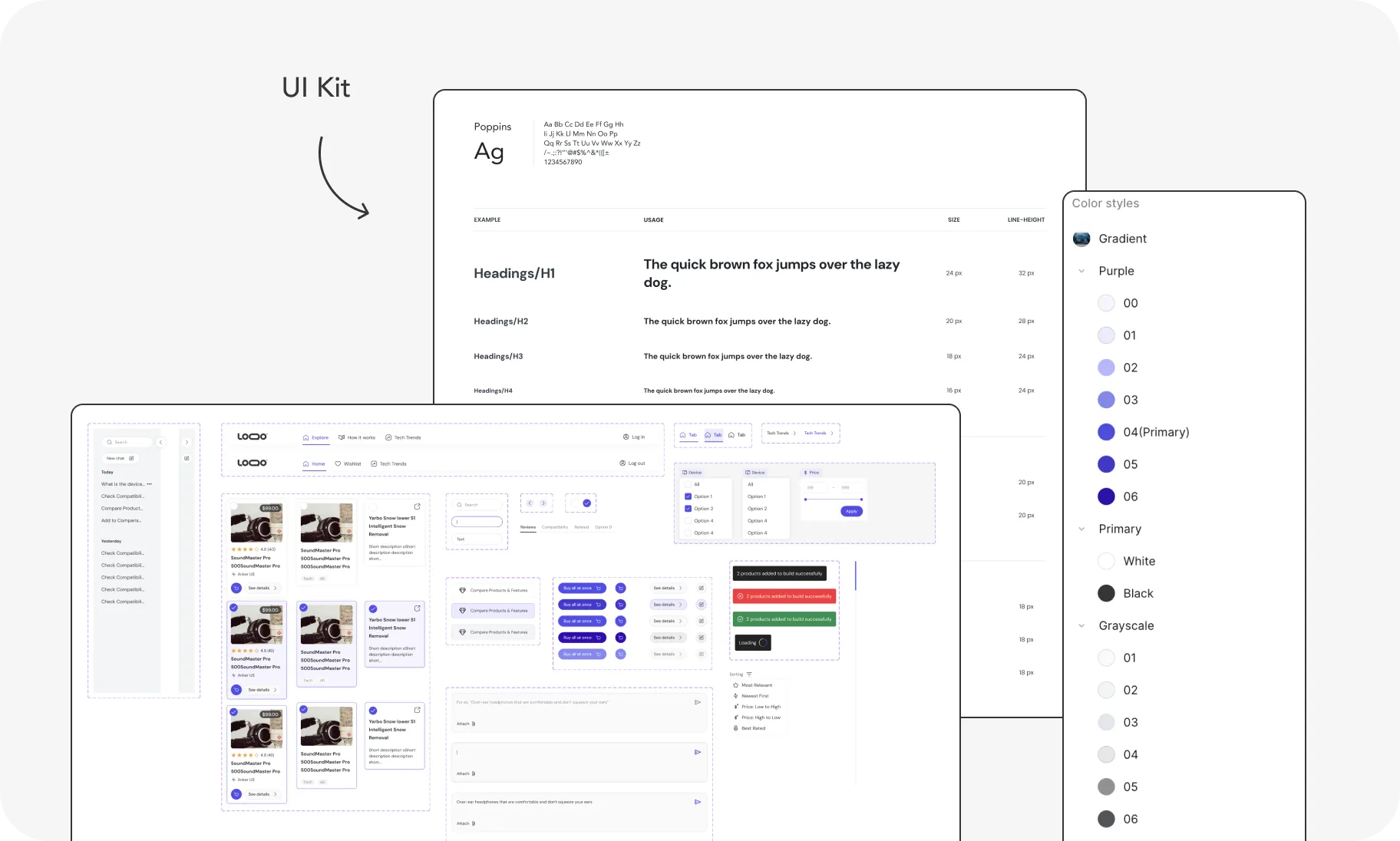
Reflections
The final design received highly positive feedback from the clients, reflecting their satisfaction with both the process and the outcome.
This project enabled me to develop my expertise in AI-driven product design, enhancing my ability to craft intuitive user experiences in complex and dynamic systems. I also successfully balanced resource limitations while ensuring users maintained a clear sense of control.
